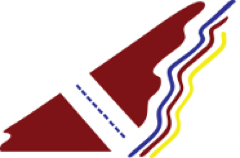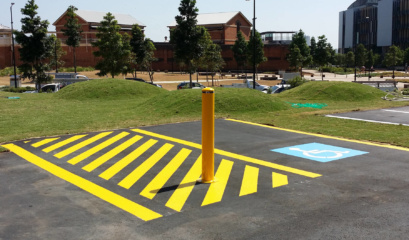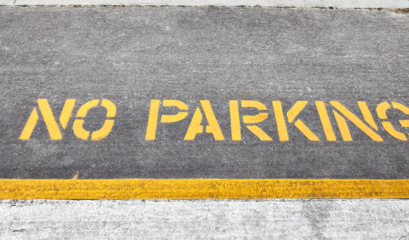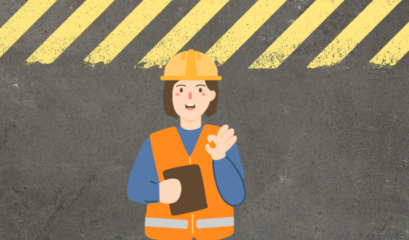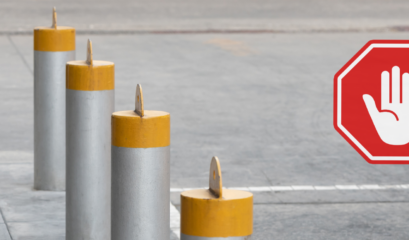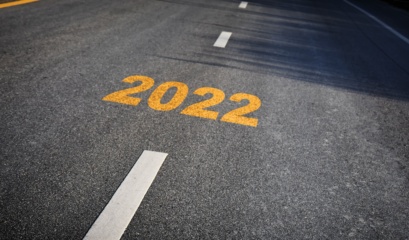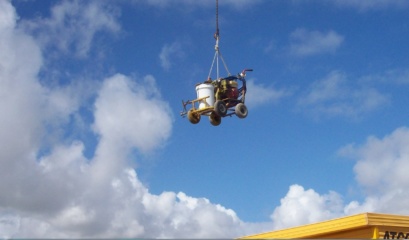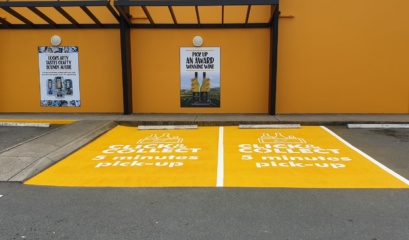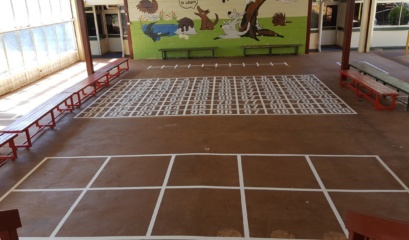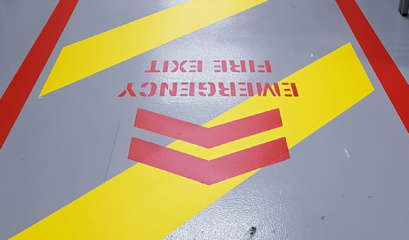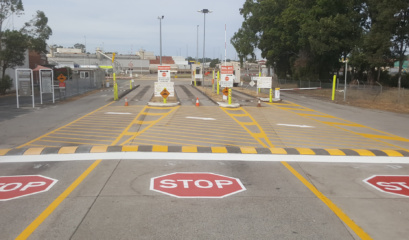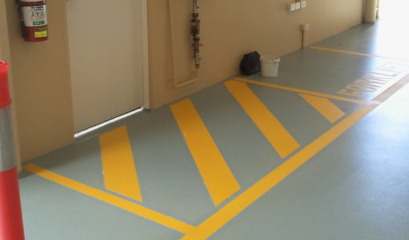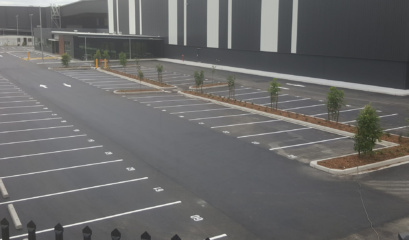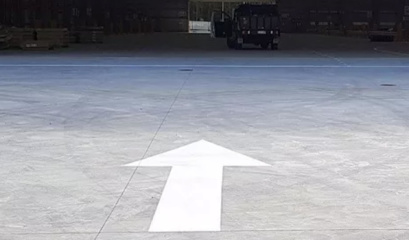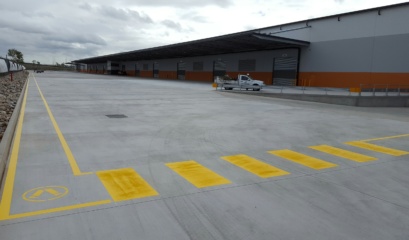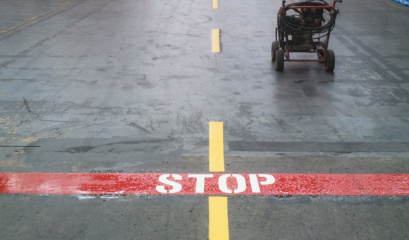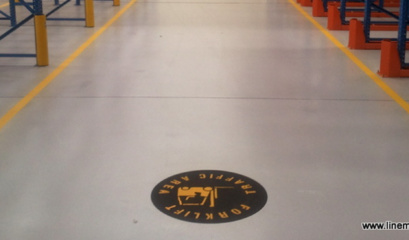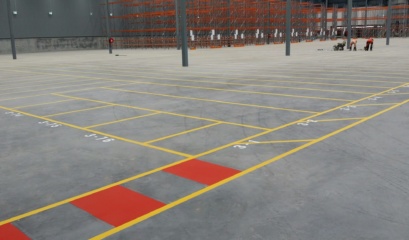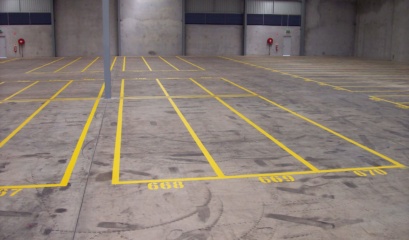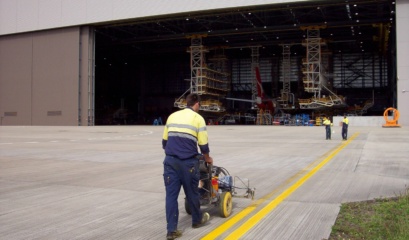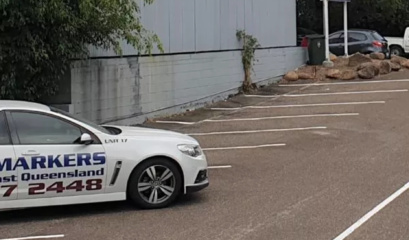Hazard line markings might seem like simple additions to a space, but their significance in risk management cannot be overstated. Whether indoors or outdoors, these markings serve as visual cues that help individuals identify potential dangers and take necessary precautions. They are particularly important for industrial safety line marking in high-traffic areas such as warehouses, factories and hangars.
Let’s explore how these markings contribute to creating safer spaces. We’ll delve into the critical role of hazard line marking in safeguarding environments. Both in terms of identifying hazards and mitigating risks.
What Are Hazard Line Markings and What’s Their Purpose?
Hazard line markings, often in the form of floor tape or painted floor markings in factories, are visual indicators used to highlight potential dangers or risks within a given area. These markings are typically brightly coloured, such as in yellow or red. This ensures visibility and draws attention to specific hazards. Their purpose is to alert individuals to potential dangers. Then guide them away from hazardous areas, thus reducing the risk of accidents or injuries.
Identifying Hazards
One of the primary functions of hazard line marking is to identify potential risks and hazards within a given area. Whether it’s factory, hangar, or warehouse floor lines, or even a construction site or public space, hazard line markings draw attention to areas where caution is warranted.
Here are some examples of where hazard line markings can be effective in increasing safety:
Traffic Routes: Hazard line markings can delineate traffic routes and pathways for vehicles and pedestrians within industrial facilities or warehouses. This helps prevent collisions between vehicles, forklifts, and pedestrians, reducing the risk of accidents.
Falling Hazards: In areas where there’s a risk of falling objects or materials hazard line markings can indicate restricted zones or areas where head protection is required. Such as construction sites or warehouses with high shelving.
Slippery Surfaces: Hazard line markings can be used to highlight areas prone to slippery conditions, such as wet floors or areas with oil or grease spills. These markings serve as visual warnings, prompting individuals to proceed with caution and use appropriate footwear.
Electrical Hazards: In facilities with electrical equipment or wiring, hazard line markings can mark boundaries or clearance zones to prevent accidental contact with live electrical components. These markings help to ensure compliance with safety regulations and reduce the risk of electrical accidents.
Confined Spaces: In industrial settings where confined spaces are present, hazard line markings can indicate restricted entry points or areas with limited ventilation. This helps prevent unauthorised access and ensures the safety of workers entering confined spaces.
Chemical Storage Areas: Hazard line markings designate areas where hazardous chemicals or materials are stored. They indicate the need for appropriate personal protective equipment (PPE) and handling procedures. These markings contribute to chemical safety and prevent accidental exposure.
Fire Exits and Emergency Routes: Hazard line markings can guide individuals to fire exits and emergency evacuation routes in buildings or facilities. Clear markings ensure swift and orderly evacuation during emergencies, reducing the risk of injuries or fatalities.
Equipment Operating Zones: In industrial environments with heavy machinery or equipment, hazard line markings can delineate safe operating zones and establish clear boundaries for equipment operation. This prevents accidents caused by unauthorised entry into equipment operating areas.
Vehicle and Pedestrian Crossings: In outdoor settings such as parking lots or construction sites, hazard line markings can indicate designated vehicle and pedestrian crossings. These markings enhance traffic safety and prevent collisions between vehicles and pedestrians.
High-Temperature Areas: In facilities with high-temperature equipment or processes, hazard line markings can mark out exclusion zones or areas with hot surfaces. These markings help prevent burns and other heat-related injuries by clearly defining hazardous areas.
Aircraft Movement Zones: In airport hangars, hazard line markings delineate aircraft movement zones, guiding ground crew and vehicles away from active runways and taxiways. These markings ensure safe operations and reduce the risk of accidents involving aircraft and ground vehicles.
Mitigating Risks
Once hazards are identified, the next crucial step is to mitigate risks and prevent accidents or injuries. Hazard line markings play a pivotal role in this aspect by demarcating safety zones, guiding safe pathways, and delineating areas to be avoided. For instance, warehouse floor line marking can outline safe pedestrian walkways, keeping workers away from forklift traffic or other potential dangers.
Enhancing Safety Culture
Beyond their practical utility in risk management, hazard line markings contributes to a safety-conscious culture within organisations and communities. When individuals encounter hazard line markings regularly, they become more attuned to potential dangers. Heightened awareness promotes a culture where safety is prioritised and proactive measures are taken to prevent accidents.
Industrial floor markings in factories, warehouses, airport hangars or other spaces are indispensable tools in risk management. By clearly identifying hazards and guiding individuals away from potential dangers, these markings contribute significantly to creating safer spaces.
Are you a business or organisation= in South East Queensland looking to enhance safety measures? Enlisting the expertise of professionals like LineMarkers ensures that hazard line markings are not just symbols but proactive safeguards. Embracing the crucial role of hazard line marking is a proactive step towards creating environments where safety is paramount.
Looking to enhance safety measures in your workplace or community? Contact LineMarkers today for professional hazard line marking services that prioritise safety and quality. Let’s work together to create safer environments for all.



